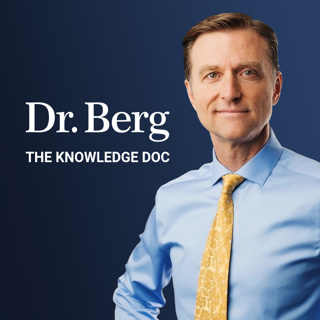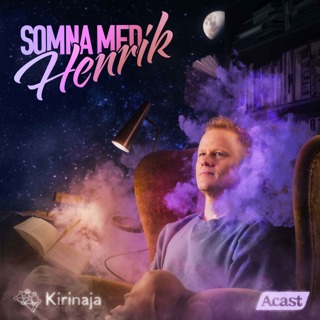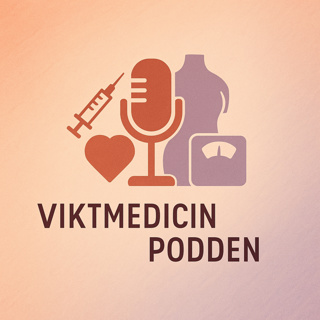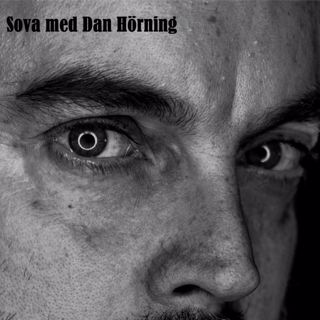
VITAMIN D IS WORTHLESS
Today, I’m going to share some important information about vitamin D. The VITAL study, which involved 26,000 people, concluded that vitamin D supplementation is essentially worthless. The study found that vitamin D supplementation did not reduce the risk of cancer, major cardiovascular events, stroke, or cardiovascular death. In this study, they used the same trial protocols used in drug trials. One group received vitamin D, and the other received a placebo. We naturally have vitamin D in our systems from our diet and the sun, but no baseline vitamin D was determined in this study. Everyone in the study, including the placebo group, was permitted to take up to 800 IU of vitamin D per day. Furthermore, the VITAL study measured vitamin D in the blood, which is the inactive form. This is the reservoir of vitamin D that supports the skeletal system and calcium regulation, but this was not tested for. Vitamin D is involved in another system that supports the immune system, prevents cancer, is anti-inflammatory, prevents diabetes, and prevents dementia. The active form of vitamin D found in the cells is not measurable in the blood. The VITAL study claimed to give the study group a high dose of vitamin D, but they only used 2,000 IU! Dr. Hollis mentions a Townsend letter that references 6 papers that show the promising benefits of vitamin D: • Decreases autoimmune disease by 22% • Decreases the incidence of advanced cancer • The more vitamin D in your blood, the lower the risk of cancer • Reduces autism • Reduces asthma • Decreases adverse outcomes in pregnancy Although the VITAL study essentially deemed vitamin D as worthless, there’s plenty of research showing that vitamin D can reduce breast cancer, tooth decay, depression, skin disorders, prostate cancer, cardiovascular disease, high blood pressure, diabetes, and colon cancer. Research has also shown the surprising benefits of sunlight—the best source of vitamin D. Sun exposure can significantly reduce your risk of breast cancer, decrease blood pressure, and increase serotonin by up to 80%. DATA: https://www.townsendletter.com/e-lett...
15 Juli 20245min

Your Body Is BEGGING For Vitamin D!!
Please join me in welcoming Professor Bruce Hollis! Professor Hollis’ research has provided a new understanding of the importance of vitamin D and its full range of functions. Vitamin D has been understood as an essential nutrient for skeletal integrity and maintaining blood calcium levels. As microbiology and research developed, researchers found that many cells that had nothing to do with the skeleton could respond to vitamin D, including cancer and immune cells. Vitamin D exists in different forms inside the body. When you take a supplement or sunlight hits your skin, you’re dealing with the inactive form of vitamin D. It is then turned into a compound called 25-hydroxy vitamin D, the intermediate form of vitamin D that stays in the blood for weeks. This form is picked up in blood tests but isn’t easily accessible by the tissues that might need it. The final form of vitamin D is one of the most potent hormones, 125 di-hydroxy vitamin D. Vitamin D is converted into the active form in the kidney but can also be converted inside the cells. The vast majority of studies substantiating our information on vitamin D in the U.S. have several problems and have produced inaccurate results. There is also no agreed-upon range on “normal” vitamin D levels. Professor Hollis has conducted research and has seen significant results using vitamin D to prevent birth complications in women in Iran, in patients with low-grade prostate cancer, and in lactation. He also explains the importance of magnesium, a key cofactor for vitamin D metabolism. Professor Hollis wants people to understand that few physicians recommend or acknowledge the benefits of vitamin D because national organizations have yet to properly understand and recognize them. DATA: https://www.townsendletter.com/e-lett...
14 Juli 202453min

The Most Powerful Group behind What You Eat
Today, we're going to talk about the most powerful group in the food industry—the four companies control 90% of the grain trade. This includes products made from corn, soy, wheat, sugar, and rice, which comprise about 68% of the average person’s calories in the United States. The 4 following companies are the middleman between farmers and food corporations: 1. Archer Daniels Midland 2. Bunge 3. Cargill 4. Louis Dreyfus There is a lot of corruption in the food industry. Many “junk food brands” also own organic and natural brands, pet food, and vitamin and supplement companies. Starches, sugars, and seed oils are the main ingredients in almost all ultra-processed foods. The sugar is used to keep you wanting more, seed oils are repurposed waste, and starches are a chain of sugars used as a filler. Starches cause more of an insulin spike than sugar. Sugar has a glycemic index of 65 compared to 185 for maltodextrin! Fillers and starches can cause major health problems. The market follows the demand, so what you choose to buy is important! If you stop buying these products, you decrease the demand.
13 Juli 20246min

ICE CREAM Can Be HEALTHY?!
Today, I’m going to tell you about the healthiest ice cream and the worst ice cream! The worst ice cream for your health is Ben & Jerry’s! It contains cream, liquid sugar, skim milk, more sugar, brown sugar, soybean oil, and tapioca flour. There are 49 carbs per serving, with 3 servings in a single pint! That’s around 35 teaspoons of sugar! Breyers ice cream contains 21 grams of carbs and 18 grams of sugar per serving. Breyers uses high fructose corn syrup instead of cane sugar. Breyers vanilla ice cream is a step up from the other flavors. It contains milk, cream, sugar, xanthan gum, and natural flavors. Breyers Carb Smart ice cream is their low-carb ice cream option. It contains maltitol syrup, which can cause gastrointestinal problems. It also contains soluble corn fiber and sucralose, a chlorine-based sweetener. Haagen-Dazs is a better option. It contains cream, skim milk, egg yolk, cane sugar, and natural flavoring with 14 teaspoons of sugar compared to 35. Keto ice cream contains cream, water, egg yolk, erythritol, strawberries, and soluble corn fiber. One pint contains 30 grams of sugar alcohol, which can create digestive issues. Rebel ice cream contains 0 grams of sugar per pint. It contains cream, erythritol, egg yolk, chicory root fiber, milk protein isolate, carob gum, and monk fruit. This is a good option! Simple Truth frozen dairy dessert doesn't contain 10% milkfat, so it cannot be called ice cream. It contains inulin, allulose, maltitol, erythritol, milk protein concentrate, coconut oil, guar gum, monk fruit, and stevia. Around 30% of this dessert is fiber, and it contains 39 grams of sugar alcohol! Don't choose an ice cream just because it says it’s keto-friendly. Check the ingredients! The healthiest ice cream is homemade ice cream. To make a truly keto-friendly ice cream you'll use allulose as the sweetener. Honey is also a good option, but it won’t be 100% keto-friendly. Homemade ice cream recipe: 1 cup organic grass-fed heavy cream 2 pasture-raised, organic egg yolks 3 tbsp powdered allulose or 1 tbsp honey 1 pinch of sea salt 1 tbsp pure vanilla extract ½ cup pecans or walnuts (optional) Directions: Blend the ingredients and freeze for 4 to 5 hours. Alternatively, you can add all ingredients to an ice cream maker and follow the manufacturer's instructions. Enjoy your healthy ice cream!
12 Juli 20248min

The Worst Ingredient in the World: Interview with Dr. Chris Knobbe
Please join me in welcoming Dr. Chris Knobbe! Dr. Knobbe is an ophthalmologist who has been working on seed oil research for the past 13 years. His research investigates industrial seed oils and their connection to obesity, diabetes, and almost all the chronic diseases that plague us today. Sugar consumption levels did not change much between 1922 and 1987; however, obesity increased by 600%! During this time frame, vegetable oil consumption went from 78 calories per person per day to 497 calories, respectively! The average American gets around ⅓ of their calories from seed oils. In 1890, diabetes was incredibly rare, affecting around 0.0028% of the population. By 2016, 13% of the population had diabetes. How do seed oils contribute to diabetes? Simply put, seed oils drive mitochondrial dysfunction, inhibiting the body's ability to burn fuel properly. Seed oils are rich in omega-6 fatty acids that accumulate in our body fat, cell membranes, and mitochondrial membranes. These polyunsaturated fats cause oxidation and inflammation in the body. They are also nutrient deficient. When you consume nutrient-deficient foods like seed oils or sugar, your body has to pull from nutrient reserves, creating deficiencies. Cottonseed oil was the first seed oil introduced into the food supply. It was initially manufactured as machine oil and lamp oil. It was also used as fertilizer and cattle feed. The goal was to make money and outsell butter and lard, and the manufacturers were very successful. By 2010, the average American consumed 80 grams of seed oils daily. One of the easiest ways to eliminate seed oils from your diet is to stop purchasing food with a label! Focus on whole foods like meat, eggs, dairy, and produce, and avoid processed foods. Check out Dr. Chris Knobbe YouTube Channel and Website: / @chrisknobbemd
8 Juli 202434min

7 Stupid Health Mistakes
1. Accepting the wrong health advice as fact Just because someone is a doctor doesn’t mean you should trust them blindly. 2. Depending on protein powder for protein Protein powder is incomplete compared to animal protein. It doesn’t offer the vitamins and minerals needed to stay healthy. 3. Treating symptoms and ignoring the cause This is the main problem with the medical system. Healthcare practitioners prescribe medication to fix a problem instead of addressing the root cause. This is especially problematic when treating chronic disease because if you get off of the medication, the problem does not go away. 4. Focusing on salt reduction to reduce high blood pressure Instead of focusing on salt reduction, which will cause weakness and other problems, focus on increasing potassium. Potassium keeps your arteries healthy and flexible. 5. Choosing unsaturated fats over saturated fats Unsaturated fats like seed oils are highly refined and are in almost every ultra-processed food. Avoid them! 6. Avoiding red meat Humans have been eating red meat throughout history. It’s rich in vitamins and minerals and should be included in a healthy diet. 7. Only reading nutrition labels Nutrition facts can be confusing and misleading. You have to read the ingredients! Look for sugar, hidden sugars, seed oils, and starches. Starches are worse on your blood sugar than actual sugar. Many products that contain starches have 0 sugars listed in the nutrition facts.
7 Juli 20245min

Dry Fasting Causes 3X More Fat Loss
Today, I’m going to share some of the amazing benefits of dry fasting and water fasting. There are over 50 genes that protect us from famine and drought and produce many health benefits. Fasting can help you lose weight, burn fat, and live longer. It helps improve cardiovascular health and can improve your blood sugars. A study involving birds compared birds who ate food and drank water, birds who only drank water, and birds who were essentially dry fasting as they flew across the desert. The group of dry-fasting birds generated 6 times more water than the group of birds that drank water! The dry-fasting birds also burned more fat. When fat is burned with oxygen from the air, it turns into water. The idea that we need massive amounts of water was developed from a campaign that terrified us of dehydration! You don’t need to overdo it with water; you just need to drink when you’re thirsty. Dry fasting is a useful tool for weight loss, but you want to ensure you do it correctly for the most fasting benefits. Follow a low-carb diet for a while before trying dry fasting. Once your body is adapted to fat burning, you’ll find that fasting is much easier. Try water fasting before attempting dry fasting. If you’re water fasting, you can consume water, electrolytes, supplements, and sea salt. If you’re dry fasting, you don’t consume anything. One day of dry fasting is equal to three days of water fasting! Dry fasting turns off digestion and allows the kidneys time to rest, allowing your body to switch into repair mode. After your fast, begin eating gradually. Kefir and bone broth are good choices to break your fast. DATA: https://formative.jmir.org/2024/1/e51542 https://www.ncbi.nlm.nih.gov/pmc/arti... https://www.bcm.edu/news/dawn-to-dusk... https://www.researchgate.net/publicat...
6 Juli 20243min

I Had NO Idea This Spiked Blood Sugar
Justin Richard has collected a wealth of information using a continuous glucose monitor to experiment with different foods and their effect on his blood sugar. He explains how monitoring your glucose can help you stay healthy, too! Justin has a family history of type 2 diabetes, so he wanted to learn more about insulin resistance to prevent the same fate. He noticed his energy levels diminishing in his late 40s, especially after eating certain foods, so he began using a CGM (continuous glucose monitor) to investigate. When he first experimented with the CGM, Justin followed his typical diet, which consisted of many highly processed foods. These foods elevated his blood sugar, and it remained elevated for quite some time. Anytime you eat, especially carbs, your blood sugar rises. Depending on the type of food, you'll experience either a slight or dramatic rise. Justin was surprised by the effect white flour, bread, and whole wheat bread had on his blood sugar. He explains that there is a minimal difference between white bread and whole wheat products when it comes to blood sugar. Ezekiel bread has the lowest impact on Justin’s blood sugar. Justin explains that stress and lack of sleep significantly increase his fasting blood glucose. Eating close to bedtime leaves his blood sugar high for 6 to 7 hours. Justin recommends eating carbs with protein, fat, and fiber. This slows down the rate of digestion, lowering the blood sugar spike after eating. Apple cider vinegar mixed in water also slows digestion and significantly lowers a blood sugar spike. Justin suggests these tips to eliminate bad food choices and bad eating habits: 1. Don’t go to the grocery store hungry 2. Say no to junk food at the grocery store 3. Go for a walk after a large meal 4. Don’t consume sweets after a meal or when you wake up Justin uses a Signos continuous glucose monitoring device and highly recommends it! Justin Richard's Channel: / @insulinresistant1 Recommended Signos continuous glucose monitor: https://www.signos.com/
5 Juli 202438min




















